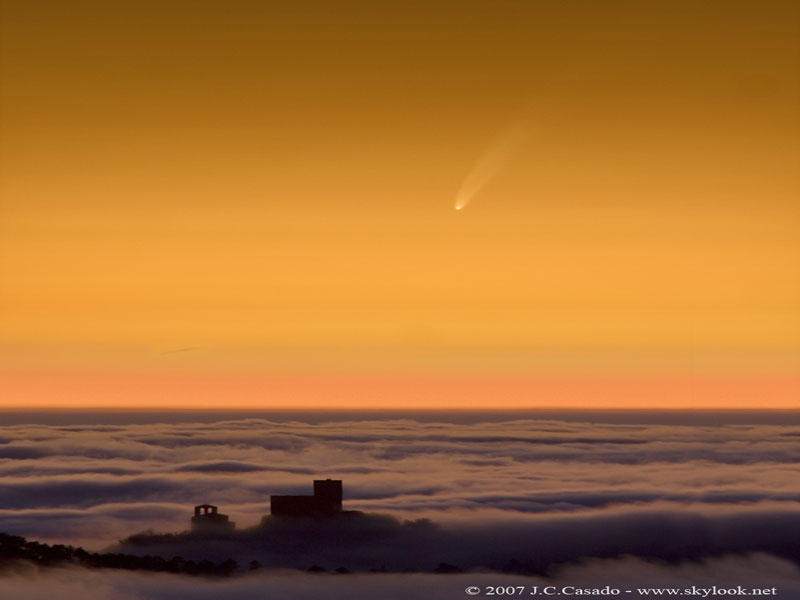Credit & Copyright: Juan Casado (skylook.net)
Explanation:
This past weekend Comet McNaught peaked at a brightness that surpassed even Venus.
Fascinated sky enthusiasts in the Earth's northern hemisphere were treated to an
instantly visible comet head and a faint elongated tail
near sunrise and sunset.
Recent brightness estimates had
Comet McNaught
brighter than
magnitude -5 (minus five) over this past weekend, making it the
brightest comet since
Comet Ikeya-Seki in 1965,
which was recorded at -7 (minus seven).
The Great Comet of 2007
reached its brightest as it rounded the Sun well inside the orbit of Mercury.
Over the next week
Comet McNaught
will begin to fade as it moves south and away from the Sun.
The unexpectedly bright comet
should remain visible to
observers in the southern hemisphere with unaided
eyes for the rest of January.
The above image, vertically compressed, was taken at sunset last Friday from
mountains above
Catalonia,
Spain.
Tomorrow's picture: tube space
1999 2000 2001 2002 2003 2004 2005 2006 2007 2008 2009 2010 2011 2012 2013 2014 2015 2016 2017 2018 2019 2020 2021 2022 2023 2024 2025 |
Январь Февраль Март Апрель Май Июнь Июль Август Сентябрь Октябрь Ноябрь Декабрь |
NASA Web Site Statements, Warnings, and Disclaimers
NASA Official: Jay Norris. Specific rights apply.
A service of: LHEA at NASA / GSFC
& Michigan Tech. U.
|
Публикации с ключевыми словами:
Comet McNaught - Комета МакНота
Публикации со словами: Comet McNaught - Комета МакНота | |
См. также:
Все публикации на ту же тему >> | |
